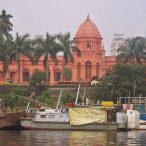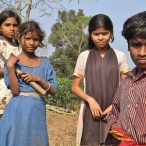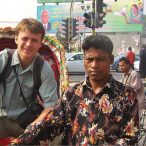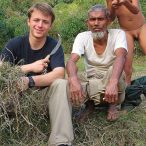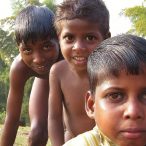Bangladesh

Official name: the People’s Republic of Bangladesh
Population: 165 000 000
Area: 147 610 km²
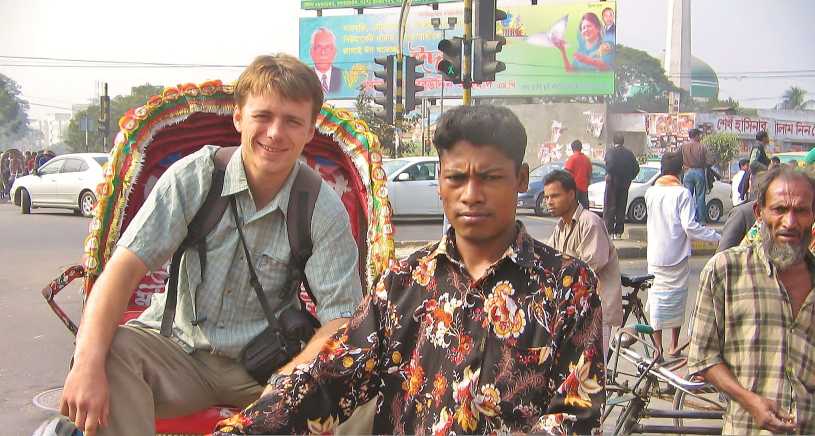
Gallery
Tourist attractions of Bangladesh, Bangladesh – the present times, history of Bangladesh.
Tourist attractions of Bangladesh
Based on a brutal fact that Bangladesh is economically, politically, and probably in every possible aspect turned upside down into a complete chaos, travellers can also find this country equally amazing and amusing.
Bangladesh does not have such a wonderful cultural heritage as the other countries of Indian Subcontinent, but it is well known for its beautiful flora and fauna. You have a chance to see bengal tigers, crocodiles and many species of birds and reptiles. There is also a mangrove and rain forest in the Sunderbans, which territory is divided with India. In the same place there is Bay of Bengal and the entrance to the Ganges river. Bangladesh also translates into beautiful tea fields and lemon trees growing nearby, rivers and the longest beach in the world in Cox`s Baazar.
Bangladesh`s capital – Dhaka, is also a very interesting experience and a city of one million rickshaws. You can also enjoy fresh fruit and coconuts, and it is so cheap as if it was free. I also recommend travelling by train on the most twisted and risky tracks of the world, where you will also find a lot of attractions, because people travel on the roof. Another great experience is a river cruise, during which you can see a fine natural beauty mixed with river slums.
I also recommend Chittagong and Srimangal, but the most important in the unforgettable Bangladesh is the general impression of the country itself. Bangladesh is still not very well known and an undiscovered destination, where the magic of your travels will never cease – although I`m talking about a completely different magic than the one of Singapore. After certain time of travelling around Bangladesh we can feel like in a comedy of errors, asking ourselves questions: “where am I, what am I doing here?”. Just take Bangladesh the way it is, enjoy its natural beauty, fresh fruit and an over sweeten tea. I really don`t have a clue what holds Bangladesh together, but it doesn’t matter, because from a travellers point of view this is what makes it beautiful. You will be also wondering why for example in the Dhaka zoo few birds have an aviary of a size of a basketball court, and a big bear has to fit in a few square meter cage.
Welcome then in Bangladesh, a country which I warmly recommend, but only to those with time and patience. In Bangladesh even a 30km bus ride could become an ‘epic’ expedition, because maybe you will have to wait for that bus 12h, maybe it will brake, maybe the bridge you want to use will collapse, maybe the roads will be flooded again and you will have to use a ferry, which naturally has all the time in world. Either way, Bangladesh is a great adventure!

With policemen in Dhaka. Bangladesh.
The good news is however, that after long years of stupid killings Bangladesh tries to save the only richness it has. Nature and wildlife conservation efforts have their first achievements, although Bangladesh still depends on big help from India and developed countries. I`m focusing especially on such endangared species as: bengal tiger, ganges gharial and freshwater dolphin.
Bangladesh – the present times
The tragedy and nonsense of Bangladesh:
Bangladesh is very poor and very unstable, and it is among the poorest countries in the world. Just as in the previously visited countries of the Subcontinent, beggars work for the people standing behind them, and children are used for different kinds of work, including brick-making and prostitution. America subsidizes a lot of money to simply keep the country together, but the help reaches only a few because Bangladesh is so corrupt.
In Bangladesh, where the territory is two times smaller than the one of Poland, lives almost 150mln people, what means that it`s one of the most overpopulated countries in the world. Converting the data to square meters, this means that Bangladesh is three times more overpopulated than India, and seven times more crowded than China. From what I could learn condoms are used here to a certain extent, but the population is still growing.
Surprisingly however, Bangladesh is ruled by two vicious, unscrupulous women: Hasina Wajed, head of the government and the daughter of the legendary Sheik Mudzibura, who led Bangladesh to independence and became its first president, and opposition leader Khaleda Zia, the daughter of the general who took power in Bangladesh after the assassination of Sheikh and his family. The most commonly used tool in the fight between the two parties are “hartals” – general strikes. Hartals, which completely paralyze life in the country are organized by the opposition. Then Bangladesh bears the consequences of huge losses. During the next election opposition party becomes the ruling party, and the former ruling party becomes the opposition party which organizes even more hartals. It is hardly surprising then, that Bangladesh since the beginning of its existence, economically can not stand on its own feet. During strikes everything simply falls. Transport does not work and some hotels` iron gates are closed with padlocks. This makes me think that when a tourist goes to see Dhaka and hartal erruppts, he might not get into a hotel.
The Polish Foreign Office website says that Bangladesh is dangerous and that these strikes turn into acts of terrorism. In addition, Poland has no diplomatic relations with Bangladesh. The same page also says that the version of Islam in Bangladesh is not as orthodox as in the Middle East, and the people are friendly towards foreigners. On the other hand I’ve heard stories in Calcutta from Indians, that when I go to Bangladesh, they will immediately attack me and take my eye or kidney out. During my travels they’ve tried to scare me away about a hundred times, but I even swam to Afghanistan and I`m all right. For example the British Foreign Office should get an Oscar for telling us horrors, because what`s the point for us to travel if we can stay at home and pay taxes. Obviously we must be afraid!
Economy:
Bangladesh suffers from many problems, although it does grow too. However it does not mean that people are developing together with their country. Bangladesh is the 43rd largest economy of the world and was selected to the D-8 (Developing eight). Bangladeshi economy is growing at 6% -7% per year, and large number of Bangladeshi nationals working mainly in the Middle East invest their money at home. At the same time I want to warn against opening a bottle of champagne, because 31.5% of the Bangladeshi population, which is about about 50 million people live below the poverty line. Another words they live on less than $1.25 a day. Most people are employed in agriculture (45%), and Bangladesh is one of the world’s largest producers of crops, such as: rice, potatoes, tropical fruits (mangoes, bananas, pineapples) and tea. I have to say hat I have personally visited tea plantations in Srimangal, and once again I realized, that “fair” trade which British press washes our brains with all the time……is a pure fiction. No matter how much and how hard those people work, they will be still extremely poor. About 20% – 30% of ??Bangladesh is hit by floods every single year, what leads to even more diseases and an annual, seasonal hunger. Agriculture continues to feed most families in Bangladesh, although fishing is also very important.
In Bangladesh, there is also a widely-developed textile industry, which at the frighteningly huge population, and a large and cheap labour puts Bangladesh in third place in the garment export. Garments are also Bangladesh`s first export product. These are mostly ready made clothes, leather goods and shoes, and overall textile industry covers 80% of export income. I also want to add that 90% of employees in this industry are women. Unfortunately, despite such a profitable business Bangladesh pays the lowest rates in the world. In 2006 the average monthly salary was only $24, but after one of many strikes wages were increased to $50 per month, what still didn’t give the required amount of $72 per month. However, even the amount of $50 seemed to much to the government, because it was considered that the workers could easily survive on $43 – despite the fact that the annual value of textiles in Bangladesh is estimated at around $16bln. This way we can clearly see the extreme exploitation of man by a man. On the other hand, from time to time the Prime Minister delivers a speech to “uplift the poor spirits” which lead nowhere.

Children from the village of Srimangal, full of tea fields and lemon trees. Bangladesh.
Other sectors are: steel, mining, chemical industry, meat processing, frozen fish, pharmacology, cement and other. In my opinion, the economy of Bangladesh and faster improvement is slowed down by huge bureaucracy, corruption and political filth. Bangladesh also has a completely worthless currency called “taka”.
Education:
The literacy level of Bangladesh stands at a tragic rate of 56,8%, what means that out of more than 160m people in the country, about 70m can’t read or write. Education is generally free between the ages of 6 and 18. There are also a lot of high schools and universities, so on the surface everything looks fine. It is an unfortunate truth that over 15% of primary school children regularly leave school, and school authorities do not treat it as a problem.
Poverty in Bangladesh is a huge problem, because parents prefer to send their children to work in a field than to school. To a very big degree girls are not sent to schools at all, especially when there is a boy in the family, who must be educated to maintain later his own family and help the parents. Before I thought that only Islam was guilty for it, but this time it is also the fault of the horrible economy, and difficult choices which follow. The model of functioning of societies repeats in many other, also non-Muslim countries, like for example Cambodia. In poverty stricken Bangladesh only 50% of children enroll to secondary schools.
Health:
In Bangladesh there is also a starvation problem, including great malnutrition of children. Over 25% of people are malnourished, and undernourished mothers give birth to malnourished children who do not grow healthy, have lack of vitamins, anemia and blindness. When it comes to malnutrition Bangladesh is the undisputed champion of the world, and 46% of children have low body weight. Bangladesh is also a leader on the list of infant mortality and children under 5 years old. Situation in Bangladesh is so tragic that according to research there are only 4 hospital beds per 10 000 people, and only 8 midwives per 1000 births, what leads to a high maternal mortality.
Medical help simply ‘jumped out of the window’. There are also many tropical diseases in Bangladesh, including about 80,000 cases of malaria per year and an average of 425 cases of tuberculosis per 100,000 people. A major problem is the disease resulting from dirty water, what leads to many other infections including cholera. Meanwhile, the government of Bangladesh spends on health only 3.35% of its GDP, while people have to pay for health care out of their own pockets. In Bangladeshi hospitals there is no basic equipment, starting from syringes to bandages. Patients must buy everything on their own.
When it comes to HIV/AIDS, because of big efforts Bangladesh is a low risk country. The risk of infection is mainly in homosexual and drug using communities. On the other hand, the problem is also in the lack of education and low condom usability. The risk also exists among foreign sex workers – mostly from Burma and India.
According to the United Nations, in Bangladesh there about 6300 people living with HIV / AIDS.

Every time they feed me with a “fair trade” lie in England, it makes me laugh. The tea plantation in Bangladesh shows the best, that there is nothing “fair”.
Culture/Religion:
Bangladesh is a Muslim country and all the habits are the same as in Pakistan, which I visited earlier. Arranged marriages are also typical for Bangladesh and women are seen less often in the streets. According to Islamic law they must be covered. In Bangladesh, there is no happiness when a girl is born, and from the birth she is prepared to work at home and care for the family. My personal opinion however is, that Islam in Bangladesh is not such an extreme mental illness as the one in Pakistan or Saudi Arabia, although on the other hand it is not as relaxed as Islam in Kazakhstan.
Media:
The one-party system of Bangladesh speaks for itself. Journalists have been beaten for writing the truth. On the press freedom lest Bangladesh is on the 129th place, what equals to a complete slavery of speech.
The catastrophic location of Bangladesh:
Now to help everyone relax I will say a few words about the nature and the weather. Bangladesh is located in a subtropical climate and there are hot, cold and a monsoon season. Rivers set a very important role in Bangladesh. They are very extensive and often flood in the monsoon season. During floods which occur regularly, a lot of people are killed and many have to migrate. It makes it very difficult to build bridges, and partly that`s why transport in Bangladesh is so bad.
On top of that Bangladesh is in the region of a very high earthquake risk. The largest and most devastating was in 1897. As mentioned before Bangladesh is regularly attacked by various disasters, such as floods, although cyclones have the most destructive force, and Bangladesh has the worst position in the world for that matter. During one of them half a million people were killed, and during the second cyclone almost 200 000 died.
Environmental issues:
All environmental problems are directly related to what I’ve described above. These include: air and water pollution, poor garbage disposal, population over possibilities of imagination, cyclones, floods, deforestation. Of course all those problems are accompanied by a huge lack of education, and callousness of politicians. Generally, Bangladesh is a country of problems.
History of Bangladesh
In my journal about Pakistan and India, I wrote about the division of the Subcontinent, but not I did not extend my story to Bangladesh.
When in 1947 the Subcontinent was divided and Pakistan separated from India, it did not separate in one piece. When West Pakistan was created, it was the center of the new Muslim state, and the East Pakistan (present Bangladesh) was only its province. Both countries administratively formed one, although were located on two different sides of the Subcontinent, and had nothing in common except religion. In West Pakistan the main language is Urdu, and in East Pakistan it is Bengali. In West Pakistan they eat mainly meat, and in East Pakistan mainly fish. The whole country (both its western and eastern part) were managed by the West Pakistan and all foreign donations, and internal and external incomes have been concentrated on the western side.
Bengalis wanted to be independent and did not want not act as “the worse”. In the same year the president of West Pakistan said that Bengalis were their under race and did not deserve to be free. Moreover, as the official language throughout the both parts of Pakistan was established Urdu and only Urdu, which nobody knew in East. It only added fuel to the fire, and heightened the desire of independence. They began demonstrations and strikes lasting until today. As a result, Pakistanis attacked from the west on the eastern part, and started raping and murdering civilians, and even used napalm. In the effect of this conflict 10 million people went to refugee camps in India. At this point, India was the suffering country, because as a third party was involved in the conflict of not their own.
After a huge cyclone in the eastern part of Pakistan which killed up 300 000 people, the government of the West did not move to help the East, and deliberately showed great slowness continuing its murders on the eastern part. There was also an armed conflict between Pakistan and India, but India was much more technically advanced and had more soldiers. Ultimately Pakistan was defeated. The West Pakistani troops were expelled from Bengal and India supported the Bengali independence.

In Bangladesh they play badminton very well. I played a fierce match in Srimangal. The sets were: Poland: 3 – Bangladesh: 2.
Finally, in 1971 the creation of a new independent state was announced – the People’s Republic of Bangladesh. Who could think that problems will only start. Also the Bangladeshi flag has a great meaning, which is a red circle on green background. The green stands for the nature, and the red for a rising sun above Bengal, and also blood of those who died for the Independence of Bangladesh.
Travel reports
Map
Location
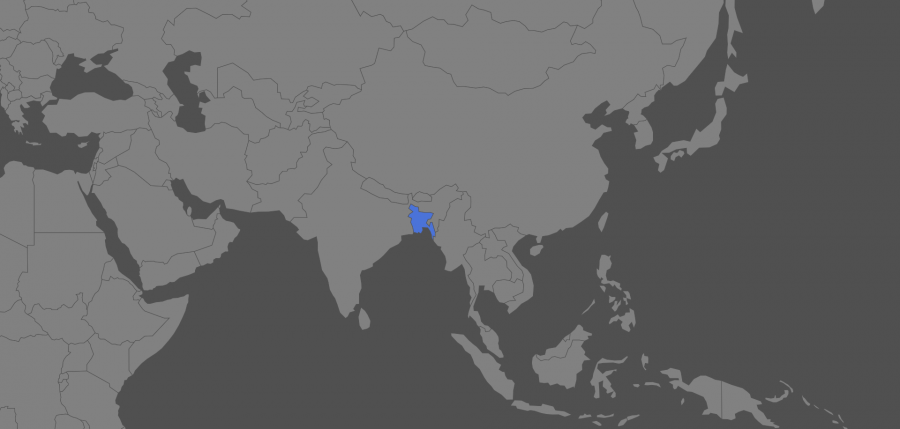
Practical information
Tourist Visa: I bought my visa in Calcutta for about $ 15, but Poles living in Poland should go to Berlin to get it or send the passport over there. Visa, usually for a single entry is granted for a period of 90 days.
Safety: I consider Bangladesh as safe but it is important to take precautions. The problem here is the disastrous economic situation and the fierce and ruthless battle between the political parties, which paralyze the country by organizing strikes (hartals). Demonstrations can then turn into stone attacks on people and vehicles. I was witnessed such attack which happened just next to me but aggression was never directed at me. In relation to the tourists, people are friendly and helpful. Outside the capital it is much more peaceful and safer. I advise you to avoid demonstrations and not to come in January because it`s an elections month and the situation is tense. Bangladesh is also considered to be a high risk when it comes to natural disasters.
Moving around the country: in theory it is easy but expect unexpected. Because of the strikes a 6-hour bus ride took me 18 hours. Buses are rather in good (adventurous) condition but the roads are bad, and because of frequent floods bridges are closed. Then you must either use a ferry or drive around. The trains are extremely slow because tracks are in a horrible state and many paths lead only through Dhaka. In Dhaka the best mean of transport are bicycle rickshaws where the prices are always agreed in advance.
Prices: (for 2007 when £1 = 120BDT) Bangladesh is incredibly cheap. For a room in a decent hotel in Dhaka I paid $ 5. Outside the capital I paid $2 – $3. Food is an matter of $2 and transport is about $5 – $6. Bangladesh is one of those countries where by having $10 in your pocket, you are one of the richest people in the village.
Climate: tropical, very humid. The air temperature is about 19oC in winter and in summer about 30°C. The heaviest rain falls is during the summer monsoon from June to September. There are a number of floods, cyclones and droughts.



